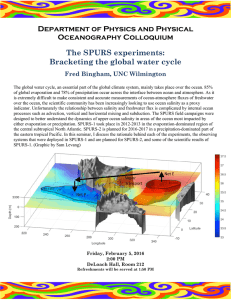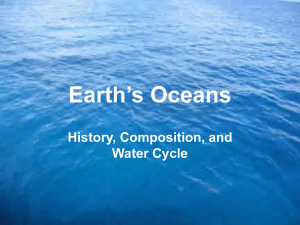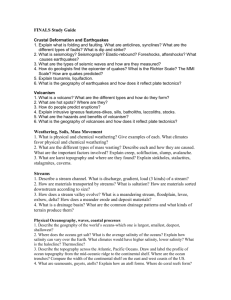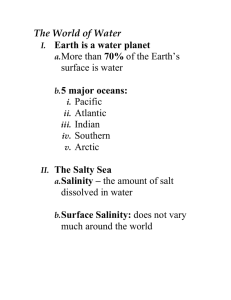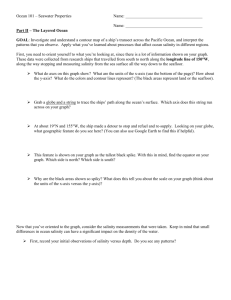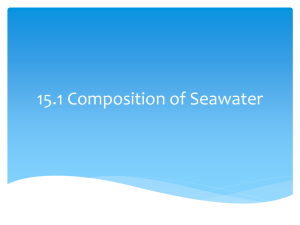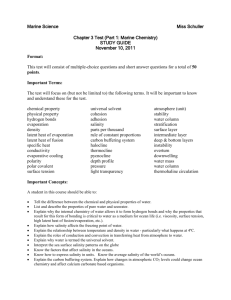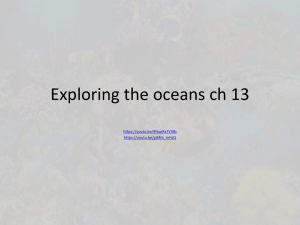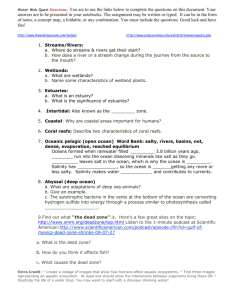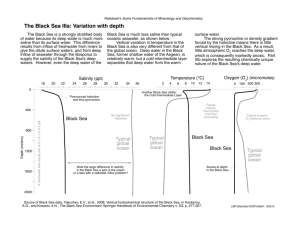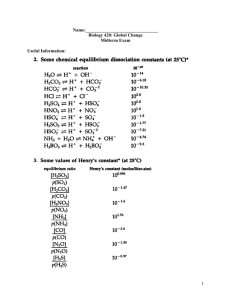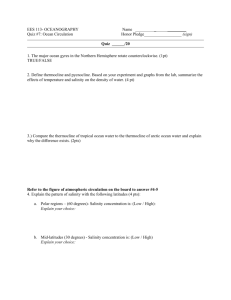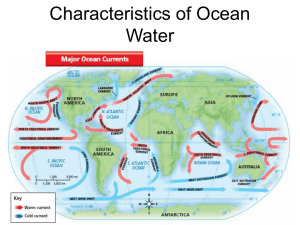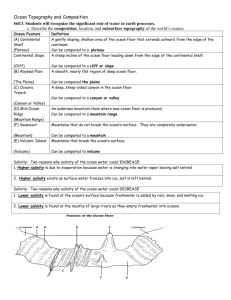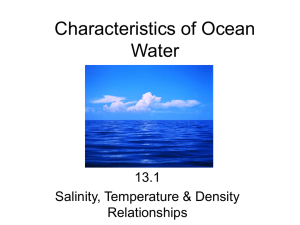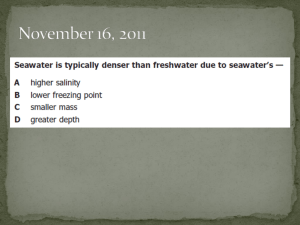WEATHERING
advertisement
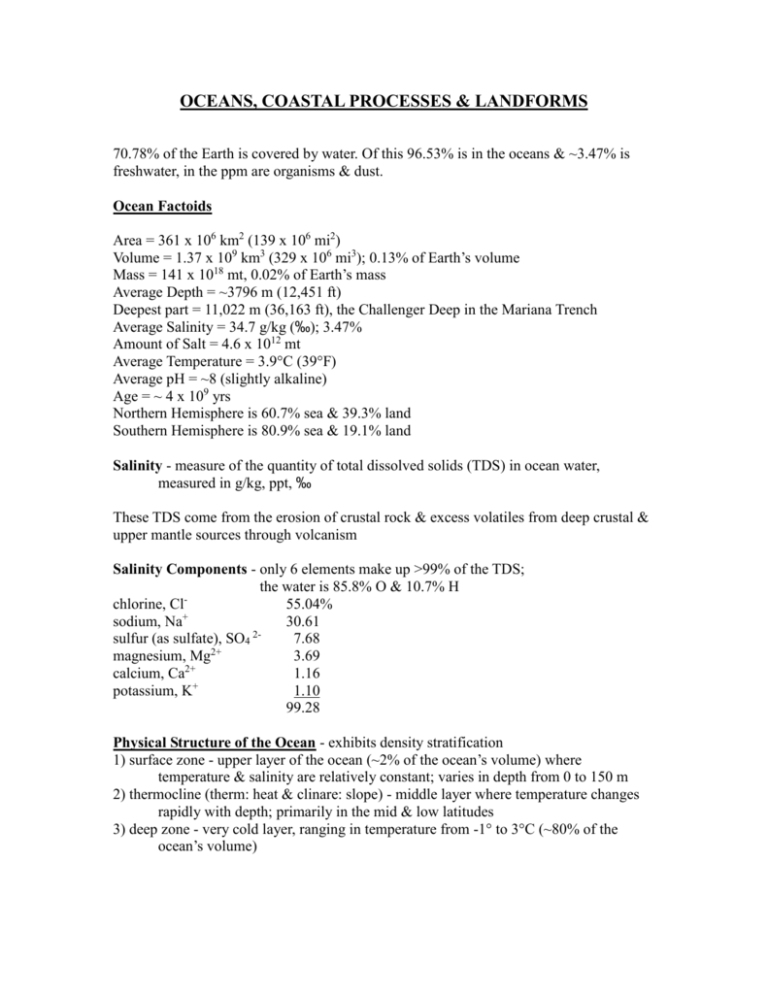
OCEANS, COASTAL PROCESSES & LANDFORMS 70.78% of the Earth is covered by water. Of this 96.53% is in the oceans & ~3.47% is freshwater, in the ppm are organisms & dust. Ocean Factoids Area = 361 x 106 km2 (139 x 106 mi2) Volume = 1.37 x 109 km3 (329 x 106 mi3); 0.13% of Earth’s volume Mass = 141 x 1018 mt, 0.02% of Earth’s mass Average Depth = ~3796 m (12,451 ft) Deepest part = 11,022 m (36,163 ft), the Challenger Deep in the Mariana Trench Average Salinity = 34.7 g/kg (‰); 3.47% Amount of Salt = 4.6 x 1012 mt Average Temperature = 3.9°C (39°F) Average pH = ~8 (slightly alkaline) Age = ~ 4 x 109 yrs Northern Hemisphere is 60.7% sea & 39.3% land Southern Hemisphere is 80.9% sea & 19.1% land Salinity - measure of the quantity of total dissolved solids (TDS) in ocean water, measured in g/kg, ppt, ‰ These TDS come from the erosion of crustal rock & excess volatiles from deep crustal & upper mantle sources through volcanism Salinity Components - only 6 elements make up >99% of the TDS; the water is 85.8% O & 10.7% H chlorine, Cl 55.04% sodium, Na+ 30.61 2sulfur (as sulfate), SO4 7.68 magnesium, Mg2+ 3.69 2+ calcium, Ca 1.16 potassium, K+ 1.10 99.28 Physical Structure of the Ocean - exhibits density stratification 1) surface zone - upper layer of the ocean (~2% of the ocean’s volume) where temperature & salinity are relatively constant; varies in depth from 0 to 150 m 2) thermocline (therm: heat & clinare: slope) - middle layer where temperature changes rapidly with depth; primarily in the mid & low latitudes 3) deep zone - very cold layer, ranging in temperature from -1° to 3°C (~80% of the ocean’s volume)




